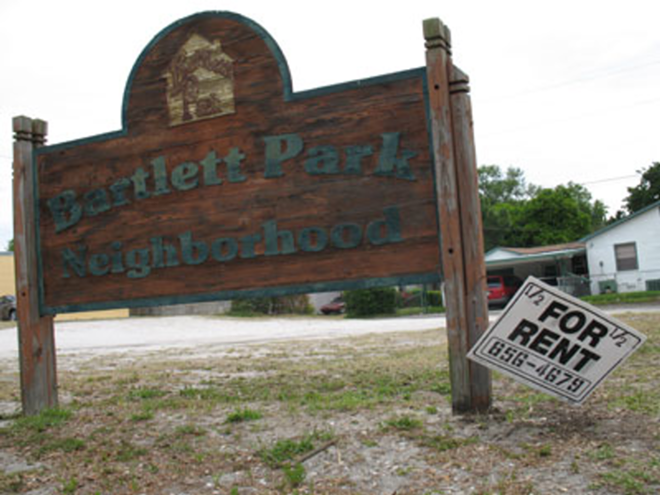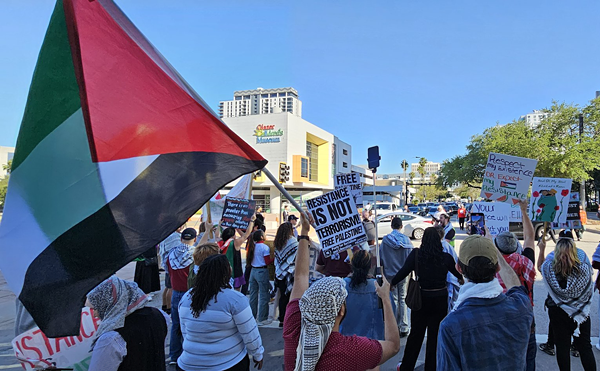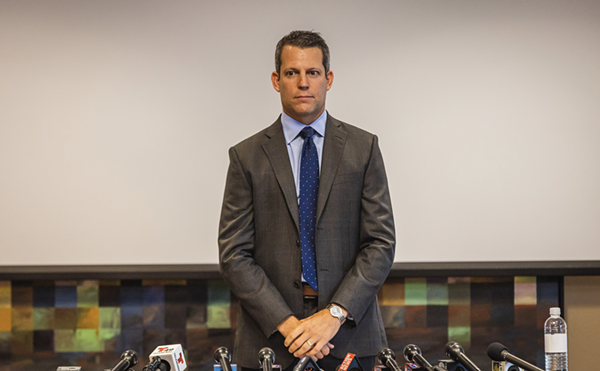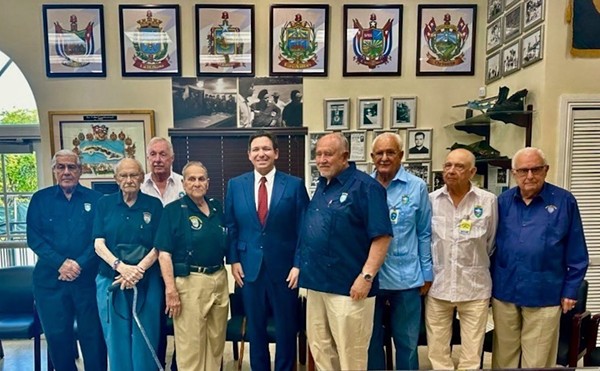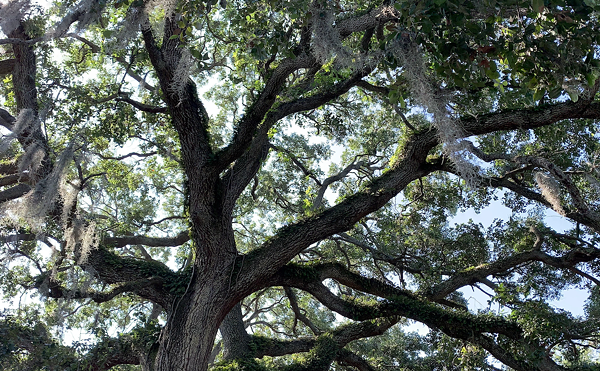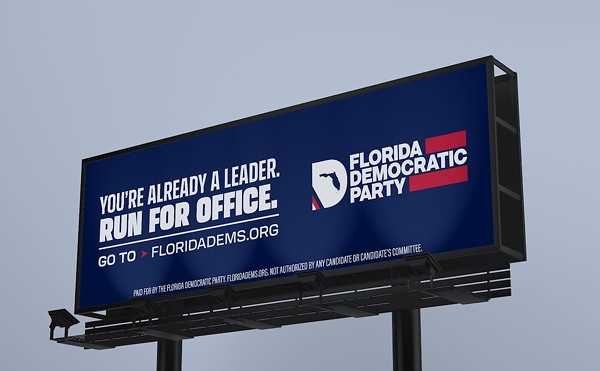"He told me 'It's a black neighborhood, you don't want to live here,'" Tito recalls. "When he realized I wanted it, he didn't say another word about it."
Tito says he didn't realize it at the time, but the neighborhood was in the midst of white flight. He remembers white realtors going door-to-door, urging other whites to sell their homes and leave the area.
But the neighborhood's affordability, location to Tampa Bay and the friendliness of his neighbors convinced Tito, then 18, to stay.
"I really fell in love with this neighborhood then," he says. "The people here were very friendly. The people on my block said hello to me. Some of them helped me fix up the house."
To Tito, it was a thriving neighborhood. The two main thoroughfares, Fourth Street and Ninth Street (which later became MLK Boulevard), were lined with diners, donut shops and bars. Residents could walk to a small grocery store and stroll through the park.
By the end of the '70s, Bartlett Park had turned to a mostly black neighborhood with a few Vietnamese and white families sprinkled in. Other than a few burglaries, Tito says crime was relatively low and violence unheard of.
That all changed in the '80s.
"Just out of nowhere we started seeing people selling crack," Tito recalls. "The police weren't able to cope with the crack. It just kept spreading."
Gangs and violent crime soon followed. On Tito's block alone, three teenagers were shot in the head in separate incidents. Drive-bys became commonplace. People abandoned their homes, and squatters moved in after them. Weeds overtook yards and trash overflowed into the streets. Businesses closed. Tito stopped taking walks.
This was about the time community activist Charles Payne moved into the neighborhood, which newspapers and city officials were already calling "the hole" and "the badlands." Bartlett Park was a drug haven, run by one Ronald Eugene "Romeo" Mathis, Tampa Bay's most powerful crack dealer. For years, he virtually controlled the neighborhood, employing dozens of teens as drug runners and using violence and intimidation to scare residents into silence.
Federal agents arrested Mathis in 1991, but the damage was already done. Fear of gangs and drug violence prevented any investment in the community. Poverty took hold. But neighborhood leaders, like Payne, were emboldened. They pressured the city to clear out squatters and board up homes. They started a block watch, created a neighborhood association and built a community center.
In 1993, city officials outlined a neighborhood revitalization plan for Bartlett Park, providing a $100,000 infrastructure grant to rebuild sidewalks, increase street lighting and pave alleyways. Tito says the community started to improve.
Then the 1996 riots hit. Residents set fire to several homes and businesses in the area, including the community resource center.
"The riots set us back 10 years," Tito says.
Enter Mayor Rick Baker, who along with Deputy Mayor Goliath Davis has made the revitalization of Midtown a top priority since his election in 2001. Over the last six years, over $100 million in federal grants have poured into the area. As prosperity slowly made its way into Midtown, adventurous investors have moved to enclaves like Bartlett Park, attracted to the historic housing stock, quick access to I-275 and the proximity to downtown and Tampa Bay.
Dan Thom, a tall, blonde 35-year-old investor from Chicago, was one of those early urban pioneers.
Three years ago, Thom moved his real estate investment company, Vision Investments, to St. Pete. Attracted by Baker's Midtown initiative, Thom and his business partner set their sights on the city's south side, specifically Bartlett Park.
"There were parts of the neighborhood that were war zones, and we said these war zones can't be here for much longer," he recalls.
His first investment was the Parkview Motel on 22nd Avenue South across from the football fields, a 20-unit complex "full of drugs and whores." It took him only 14 months to clean up the property and sell at a profit, he boasts.
"We took that property, stabilized it and we started making our investment quicker and also turned it around," he says. "We want to make money, of course, but we want to make a change in the neighborhoods we're involved with."
Since that first investment, Thom has maintained a presence in Bartlett Park, buying and selling duplexes and triplexes.
"Where else can you live by the bay so cheap?" he asks, smiling wide. "Bartlett Park is an opportunity. It's good living. It's a nature preserve. There's massive business opportunity. I can't see how you cannot be bullish on Bartlett Park."
